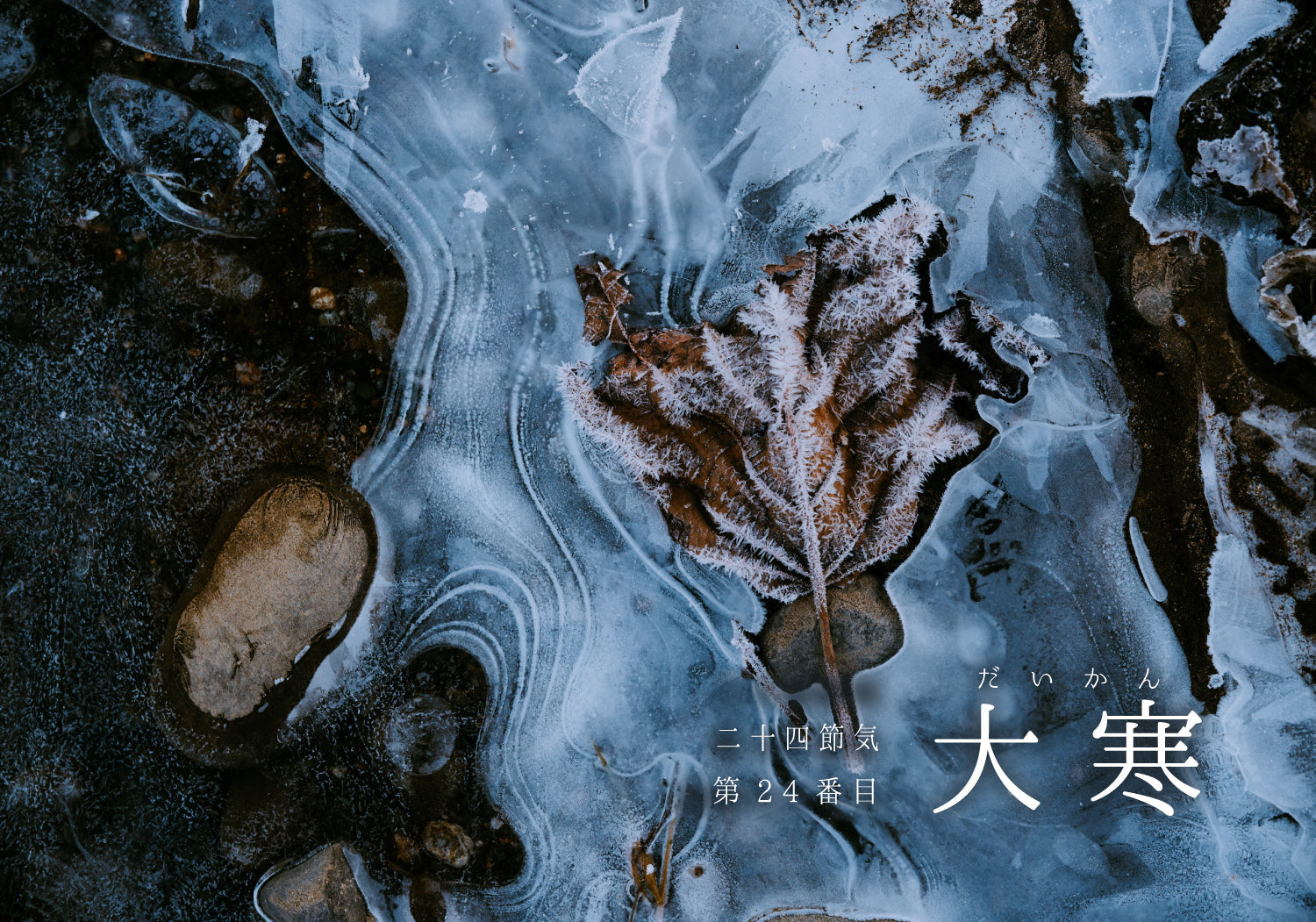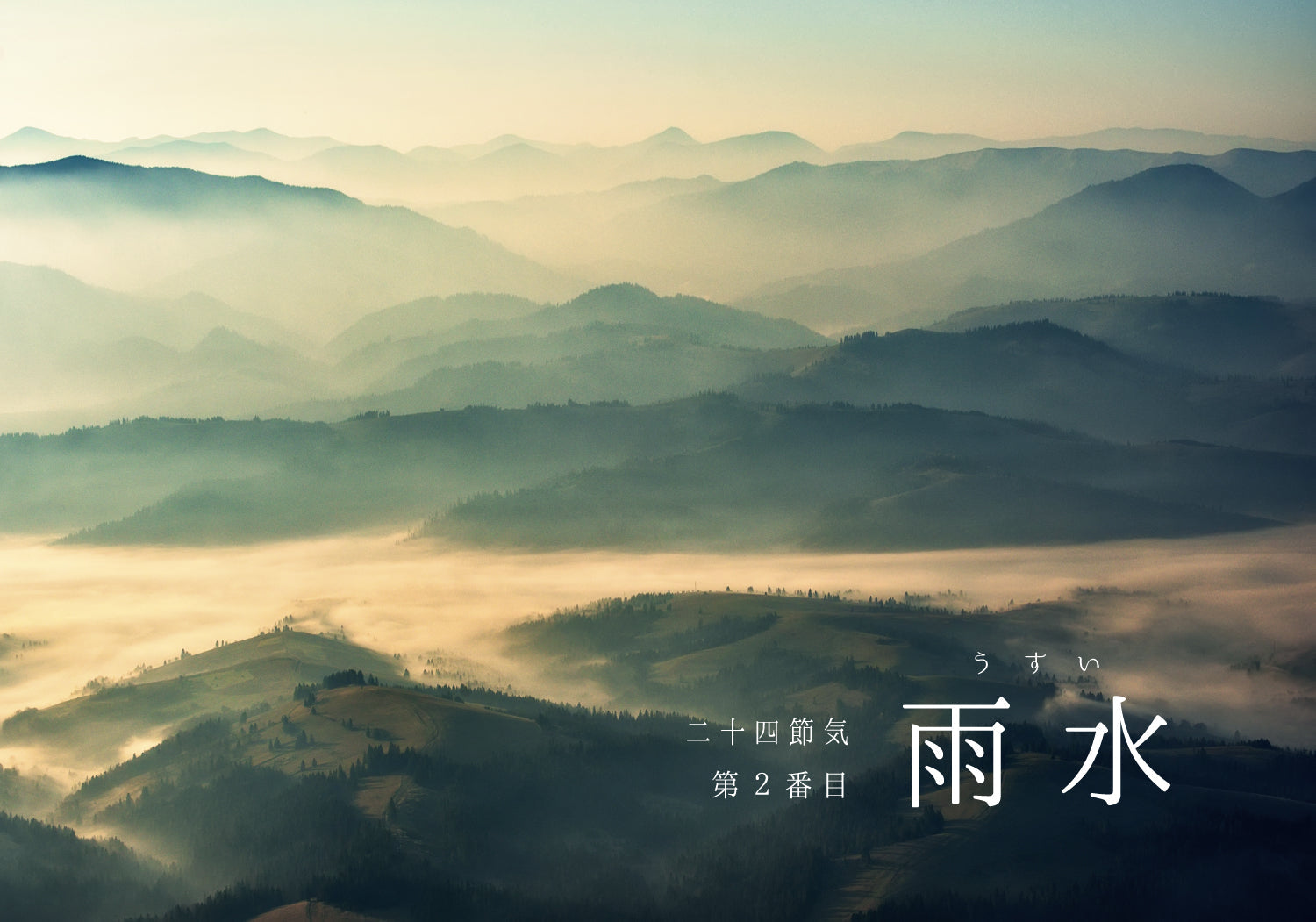24 solar terms No. 4: Vernal equinox
The vernal equinox marks the time when spring transitions into summer.
This is the day when day and night are of equal length, and it is also designated as a national holiday to praise nature and cherish living things.
It is around this time that we start to hear reports of cherry blossoms blooming, signaling the full arrival of spring.
In Japan, this is a time of year when many new encounters, partings, and lifestyle changes occur.
Now, let us introduce some events that take place around the time of the Vernal Equinox .

1. Vernal Equinox and Higan
A holiday to "praise nature and cherish living things"
Around the vernal equinox.
The cold winter is finally over, and as the snow melts, the fields and mountains begin to sprout new shoots, and the birds begin to sing. Under the soil, insects begin to wriggle, and we move towards the season of beautiful new greenery.
The Vernal Equinox is also the middle day of the Higan period.
The "Spring Equinox" period lasts for a total of seven days, three days before and three days after the Vernal Equinox.
In addition, the Autumnal Equinox covers a total of seven days - three days before and after the Autumnal Equinox.
▼For more information on the solstices and equinoxes, please see below▼
Vernal Equinox is a day to praise nature and cherish living things
The autumnal equinox is a day to honor ancestors and remember those who have passed away.
Generally, Higan is considered a Buddhist event that takes place twice a year, in the spring and autumn, and is generally understood to be a period for honoring ancestors through visiting graves and making offerings.
The custom of holding memorial services for ancestors during the equinox is a culture unique to Japan .
What is “Higan”?

In Buddhism, "Higan " refers to the world of enlightenment where there is no confusion . The world we live in now is called "Sigan" (this shore), and is described as a world full of confusion and worldly desires.
In Japan, it was once believed that the Pure Land was in the west.
Based on this belief, the days when day and night are of equal length - that is, the vernal and autumnal equinoxes, when the sun sets due west - were thought to be the days that bring people closest to and lead them to the Pure Land .
▼For more information about Ohigan, please see below▼
The heat and cold will continue until the equinox
From the vernal equinox to the summer solstice, the days get longer and the nights get shorter. From the autumnal equinox to the winter solstice, the days get shorter and the nights get longer.
The vernal equinox (autumn equinox), when the sun sets due west, was thought to be the day when one can be closest to paradise, and so this was chosen as the time for the Higan period.
3. Foods for the Spring Equinox
There is a custom of eating "botamochi" on the Vernal Equinox.
Mochi is eaten when praying for a good harvest, and is served at celebrations, when important guests are present, and at gatherings, and is also offered at memorial services. Red beans are also considered a symbol of warding off evil, and like mochi, are an indispensable food for celebrations, memorial services, and other events.

Do you know the difference between "Botammochi" and "Ohagi"?
Botamochi is said to have originated from the peony, a flower that blooms in spring, and so it came to be called "botamochi."
Ohagi is called "Mihagi" based on the autumn-blooming flower "hagi."
For this reason, botamochi is made on the vernal equinox and onohagi is made on the autumnal equinox .
Botamochi is made in a round shape that resembles the shape of a peony flower .
● Gohagi are made in a long, oval shape like a bush clover flower .
Additionally, the red beans used to make Botamochi and Onohagi are harvested in the fall.
During the autumn equinox, freshly harvested red beans can be used with the skin on, so Gohagi is made with whole bean paste .
Botamochi is made with smooth bean paste instead of the skin , because the skin of the red beans hardens in spring.
Nowadays, azuki beans can be harvested regardless of the season, so the type of bean paste used varies according to preference, and botamochi and onohagi are used as seasonal names.
4. Company Day
"Shanichi" is one of the "miscellaneous festivals," and the day of the year "Tsuchinoe/Inu" closest to the vernal and autumnal equinoxes is called "Shanichi."

The spring Shabi is the time for sowing seeds, and the autumn Shabi is the time for harvesting, making these important times in agriculture.
On this day, people worship the gods of the earth, offering grain seeds to the Spring Shrine to pray for a good harvest, and giving thanks for the year's harvest to the Autumn Shrine. In some areas, events to worship the earth gods or agriculture gods are also held as "jijinko".
Also, there is a legend that if you offer sake to the shrine on the spring day and drink it, your hearing will improve; this is called "jiroushu" (sake that cures deafness).
5. Around the Vernal Equinox [Seasonal Words]
Spring is a season of changeable weather, and many seasonal expressions are used in this season.

Late Spring
"Kasuga" means the spring sun, and "chichi" means time passes slowly.
It represents the long, leisurely and gentle days of spring.
Spring Breeze
A word that describes the peaceful spring when the spring breeze blows pleasantly
Rapeseed rainy season
This refers to rain similar to that during the rainy season that falls from late March to early April, when rape blossoms are in bloom.
As it rains during the season when flowers bloom, it is also called "Saikau" (rain that induces flowers to bloom). There is also a theory that it is derived from "nabana" which sounds the same as "saika".
Ikukau
Spring rain that promotes the growth of flowers and trees. It is also called "yokau."
6. April Fools' Day
It's a custom that is common all over the world! It's okay to tell a lie on April 1st every year.
In France, where it is said to have originated, it is known as "a day to have fun and laugh by telling white lies," and in Europe and the United States, television stations also broadcast it as material on the news or include it in advertisements, and it has become a popular day around the world as "a day to enjoy lies."

Its origin is unknown, and in Japanese it is literally translated as "April Fools," in classical Chinese it is called "Wan Fools' Festival," in Chinese it is called "Fools' Festival," and in France, where it is said to have originated, it is called "Poisson d'avril" (April fish).
What kind of lies do people tell on April Fool's Day?
There are said to be a few rules for April Fool's Day.
A common saying is, "You can only tell April Fool's lies until the morning. You have to reveal the truth in the afternoon."
Let's take a look at some rules to ensure you have a fun April Fool's Day.
1. Don't tell lies that will make people unhappy
The golden rule for April Fool's Day lies is to tell lies that you can laugh about when you are fooled. Let's have fun telling lies that leave no lasting impact.
2. Reveal the secret on the same day
Let's get it over with on the day, making it a "day to laugh and have fun" with some white lies. Once April Fool's Day is over, you might just become a liar.
Enjoy April Fools' Day!
In the UK, the day after April Fool's Day, April 2nd, is known as " True April " , a day when only the truth should be told.
Apparently, many people propose marriage on this day, due to the rule that only the truth can be told.
*
The time of the vernal equinox is represented in the 72 seasonal divisions as follows:
First sign, 10th sign: " Sparrows start nesting "
March 21st to March 25th, 2023

When the sparrows start building their nests
The days get longer from spring to summer, which is the breeding season for sparrows. From early morning until evening, they start building their nests by diligently collecting dried grass and feathers.
Next Season 11th Season < Sakura Begins to Bloom >
March 26th to March 30th, 2023

When the cherry blossoms start to bloom
As the mild spring weather draws on, cherry blossoms are beginning to bloom here and there, and we are hearing reports of cherry blossoms blooming from all over the country.
Last sign 12th sign: " Thunder utters a sound "
March 31st to April 4th, 2023

When the first thunder begins to rumble
The first thunder after the beginning of spring around February 4th is called "first thunder," while thunder that occurs in the spring is called "spring thunder."
Thunder is more prevalent in the summer, but unlike summer thunder, "spring thunder" is not as violent; you hear one or two thunderclaps and then it stops.
It is the paired season with the first sign of the autumnal equinox, "The roar of thunder reaches its peak."
*








